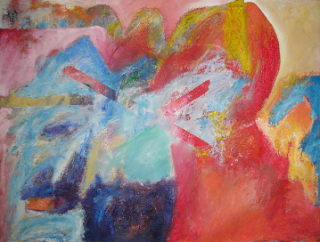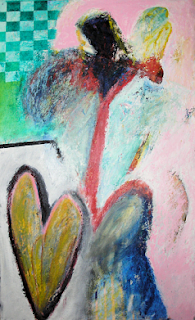Published in
The News Tribune, February 23, 2007
Wendy Kesselman’s new adaptation of the 1955 Pulitzer Prize-winning play “The Diary of Anne Frank” by Frances Goodrich and Albert Hackett is more disturbing than the original. This new version no longer ends with the famously hopeful statement, “I still believe, in spite of everything, that people are truly good at heart.”
It presents a darker, more realistic vision. It is more Jewish, more sexually explicit and much less Pollyanna-ish – although Anne’s underlying faith in humankind remains until the end. There are also many humorous moments, for without humor the families could not have survived as long as they did.
When the Nazis invaded Holland in 1941, 13-year-old Anne Frank, her parents and sister were forced to go into hiding in the father’s office building. Also in hiding with them were the van Pels family: Hermann, Auguste and their son, Peter; a dentist named Fritza Pfeffer and Anne’s cat, Moortje. (In the play, the van Pelses are renamed van Daan, the dentist is named Mr. Dussel, the cat belongs to Peter, and Peter and Anne’s names are pronounced in the Dutch fashion: Ahnna and Pater.)
The families remained in hiding from July 12, 1942, until Aug. 1, 1944, when they were betrayed by unknown persons and taken to the concentration camp at Auschwitz. Later, the women were separated and taken to Bergen-Belsen. Anne died a few weeks before the camp was liberated.
While they were in hiding, Anne kept a diary that her father, Otto, the only survivor, published after her death. Otto Frank severely censored Anne’s diary, either to protect her reputation or to make the writing more palatable to the public. He cut out his pubescent daughter’s sexual fantasies and her harsh criticism of her mother, and he cut out many of the scenes involving Jewish ceremonies. All of these are restored in the new adaptation now playing at Lakewood Playhouse.
Naarah McDonald’s excellent direction and the set designed by Erin Chanfrau create a claustrophobic feel that, if not literally realistic, is emotionally true. The set, built on a series of graduated risers with boxy furniture, does not attempt to recreate the actual rooms the families lived in, which were roomier and more nicely furnished, but it is more true to what it must have felt like than a more elaborate set would have been. And McDonald’s blocking of the actors as they move about this set is masterful. Actors playing the parts of the eight people who lived together never leave the set except to “go to the bathroom,” meaning there are at least seven actors on stage at all times.
The only thing in the play that does not seem real is when the two Nazi soldiers burst in to arrest everyone. The two actors look too young and sweet, and the whole scene should be either more chaotic or more rigidly militaristic.
Kendra Phillips is absolutely believable as Anne in some of the best acting I’ve seen this year. She grows from a child to a woman before our eyes in the span of two hours. Her devotion to her father and her anger at her mother touch chords of universality, and her tentative wooing of Peter is both sad and touching.
Joseph Grant as Otto is an emotional anchor, always on an even keel, with sorrow underlying his every move. Charmee Beauclaire plays Mrs. Frank with contained intensity, and Dana Galagan is lovable as Mrs. van Daan, who tries so hard to please but who can be a real hellcat when riled up.
In her director’s note, McDonald said: “I am excited to be working with the revised script, which takes the original and puts a darker, more human spin on Anne’s last years. This version maintains Anne’s hero status but shows the audience more of her humanity and produces a much darker and tragic feel. I hope the audience walks away with tears in their eyes and conviction in their heart to never allow history to repeat itself.”
I concur wholeheartedly.
WHEN: 8 p.m. Thursdays through Saturdays and 2 p.m. Sundays through March 4
WHERE: Lakewood Playhouse in Lakewood Towne Center
TICKETS: $18 general, $15 seniors and military, $12 under 25 years of age, $10 under 15
INFORMATION: 253-588-0042, www.lakewoodplayhouse.org








.jpg)
